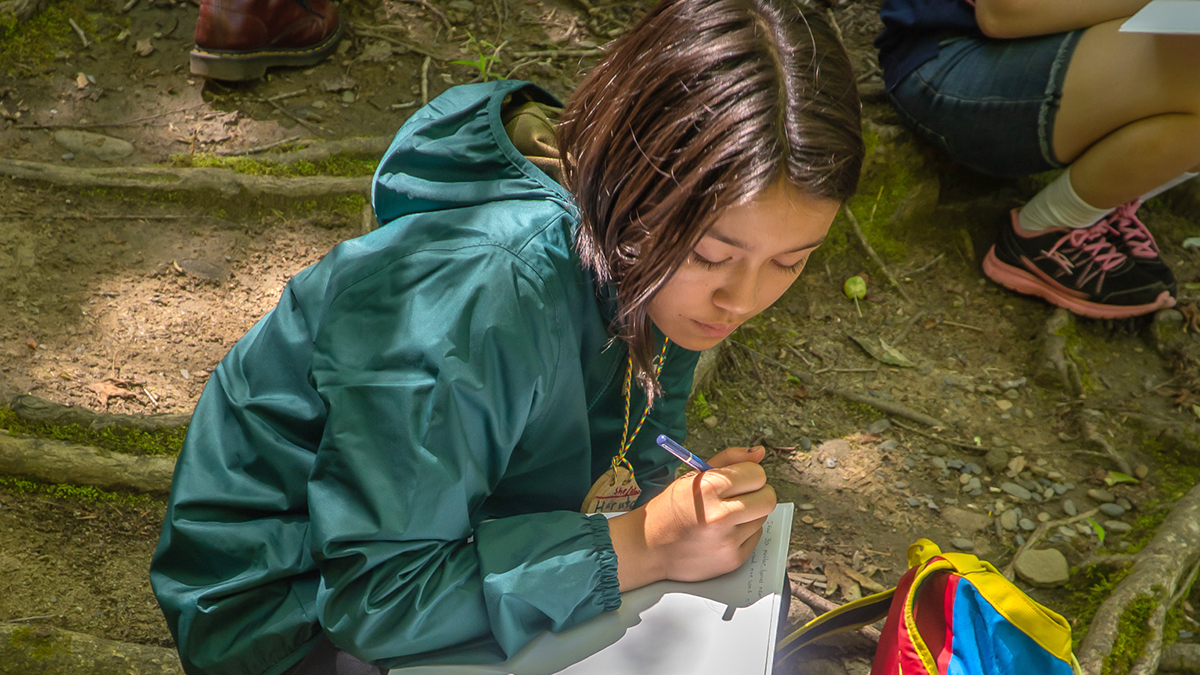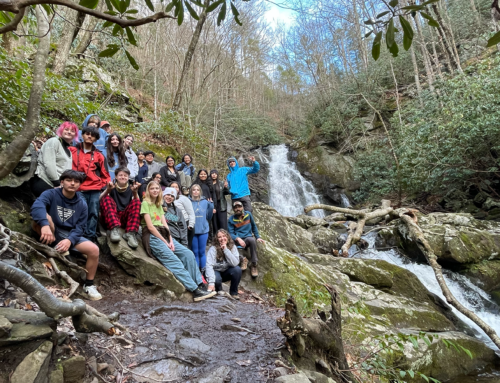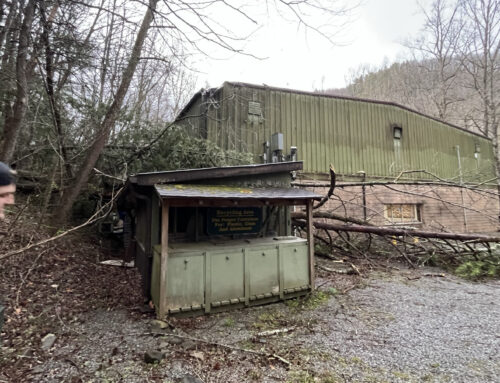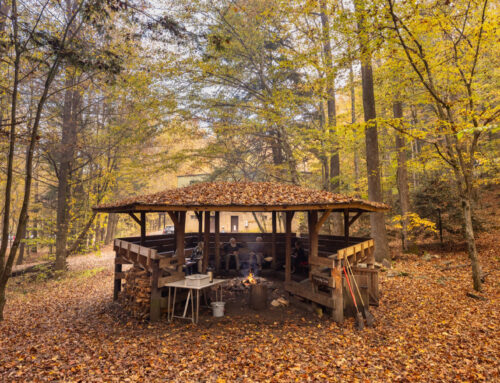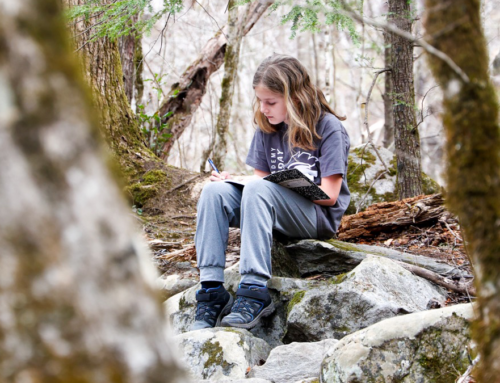“Journaling is the single most powerful tool to supercharge your observation, memory, and connection with nature. It is the critical foundational habit of being a naturalist and scientist.”
– John Muir Laws
Journaling is a highly effective way for people to observe, ask questions, and learn from nature. It sparks curiosity, helping us make connections and understand the world around us. That’s why so many educators are turning to nature journaling as a classroom tool, regardless of discipline or age group.
Below, you’ll find four activities from John Muir Law’s books, How to Teach Nature Journaling or Opening the World Through Journaling: Integrating Art, Science and Language Arts, available as free downloads here. As a group, Schoolyard Network participants explored how these lessons support their curriculum content across disciplines, as well as recognized and addressed potential challenges in implementing the activities in the classroom.
Activity 1: Comparisons
In this strategy, participants will:
- First, find two similar natural objects – flowers, leaves, acorns, twigs, etc.
- Next, hone their observation skills to notice details of the object making sure to note the similarities and differences between the two.
- Finally, sketch each object and label the similarities and differences observed.
Content connections/applications:
- Use “Comparisons” to launch a compare and contrast writing activity.
- Integrate tools such as a Venn diagram to practice documenting similarities and differences.
- Use the similarities and differences to teach the use of precise language. This may be a handy method for exploring synonyms as well.
- Use as an empathy tool. Discuss how two things can feel the same at the surface but upon digging deeper you find how they are unique.
- Use as a launching pad for a discussion of variables. Ask the participants, “If you wanted to design an experiment about these objects, what questions could we ask and what could be our variables based on the similarities and differences?”
Addressing barriers:
- Younger students may struggle to decide what to focus on. Consider modeling the strategy or doing it as a whole class first before sending them out independently.
- Consider starting with two very different versions of the same objects to help point out differences.
- Consider starting with “I Notice, I Wonder, It Reminds Me Of” with a single object to prime observation skills first before moving into two objects.
- Engagement! Be sure to share why you are doing this and how it connects to other things.
Activity 2: Pictures from Words
In this strategy participants will:
- Go outside and choose a natural object.
- Write a description of the object they chose.
- Switch descriptions with a partner.
- Draw their partner’s object based on the description.
Content connections/applications:
- Have multiple students follow the same description to compare how the same description is interpreted by different people.
- Partner this activity with a lesson on adjectives to add to their descriptive writing.
- Partner this activity with a lesson on synonyms to help students be more precise with the language they are using.
- Use this as a launch into the process of giving feedback and revising – have students practice giving feedback on the description, revise their description, and switch with a new partner.
Addressing barriers:
- Vocabulary – Make sure to include the proper vocabulary when introducing the activity.
- Students may struggle with wanting their drawing to be “correct” or “perfect” – the framing here is important to share the “why” behind the activity so students understand there are no right or wrong answers.
- Feeling self-conscious about artistic ability – start the activity with a discussion about artistic ability not hindering your ability to engage with this strategy.
Activity 3: Ten Analogies
In this strategy, participants will:
- Find an object outside (living or nonliving).
- Write down ten analogies.
- Plug their analogies into the template to create a poem.
Content connections/applications:
- Connect with teaching analogies in English Language Arts (ELA).
- Consider framing observations through the lens of pictures, words, and numbers to connect to mathematical and ELA concepts.
- Have a conversation about perspective – everyone could look at the same object and end with different poems based on what they were observing through their personal lens.
Addressing barriers:
- It may be difficult to come up with ten analogies – consider creating a version as a whole class first.
- Translating observations to analogies can be challenging but also rewarding – practice creating analogies first before applying them in this context.
- Poetry can feel tricky! The template helps frame it step by step to take some pressure off the writer.
Activity 4: Zoom In, Zoom Out
In this strategy participants will:
- First, select a natural object.
- In the middle of their journal page, draw a view of their object that is exactly life-size. If the object is larger than their page, only draw part of it.
- Add notes to make further observations about the object – this could be using words, other pictures, or numbers.
- Look for a part of the object that you find interesting and draw a circle around that part of your drawing. At the side of your paper, draw a larger circle and a magnified view of that same area showing details that are too small to be shown in the life-size picture. Again, include notes.
- Finally, take a few steps back from the object and make a final sketch – this time zoomed out to take in the whole thing – and add some details.
Content connections/applications:
- Compare and contrast – Have students practice comparing and contrasting items from different perspectives. How do our observations change? How does comparing/contrasting support a deeper understanding of the object?
- Description writing: A lot of times students might describe things generally, but then we can ask them to “Zoom in” to help them get specific in their descriptions.
- Unit on trees: How can you look at the whole tree and compare it to a grove of trees and then zoom into one specific tree?
- In “Zoom In,” you could use measurement as a lens for observation.
- Could integrate ratio work between what was observed during “zoom in”, “regular”, and “zoom-out.”
Addressing barriers:
- Patience: Kids will sometimes sit and draw but others will say “I’m done!” This structure can naturally address the pacing. Encourage students to go back and add detail to ensure they are representing the object in front of them.
- For kindergarten and first graders, the idea of “Zooming In” might be tricky. Use a magnifying lens to understand the concept a little better.
- Some kids never seem to make it to the third drawing: Help control the item we chose to make it manageable.
Interested in more educator content like this? Tap into a network of teachers and local resource providers during friendly, informal monthly professional development and sharing sessions. The Schoolyard Network will provide ideas and encouragement for you to take back to your classroom, focusing on better teaching and learning using the environment as an integrating concept. There is no cost to participate.


